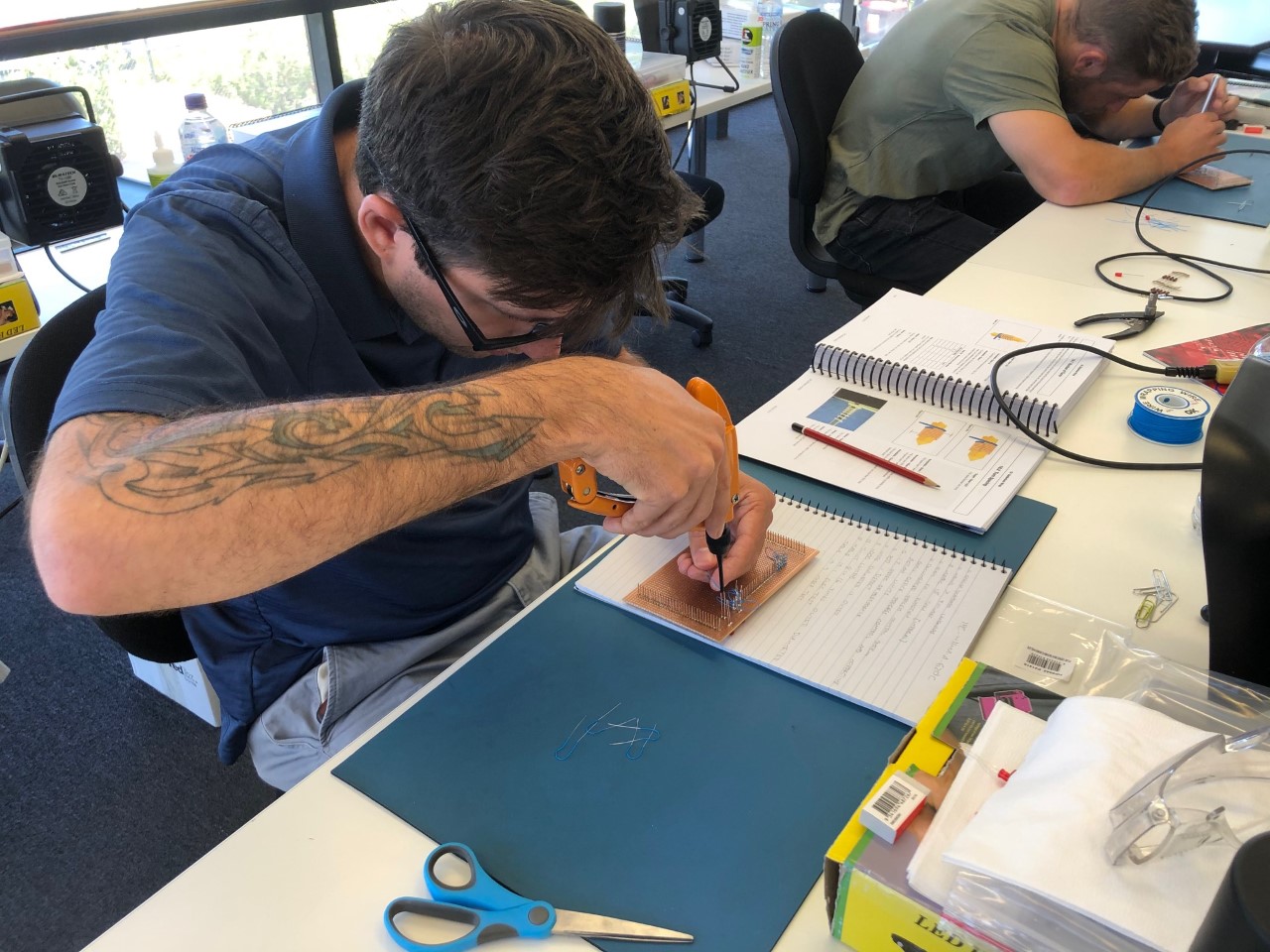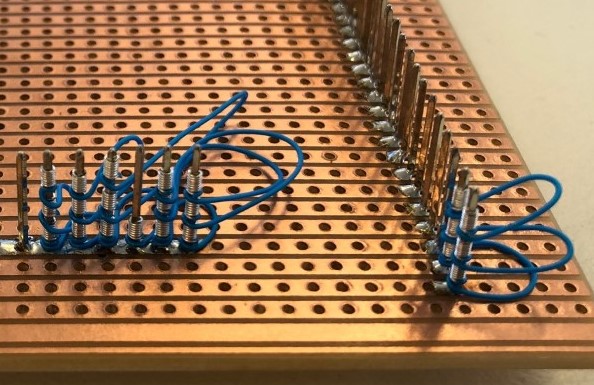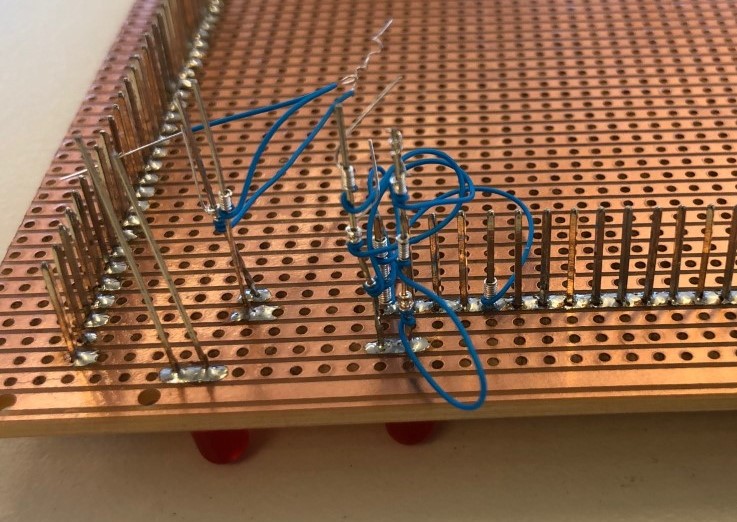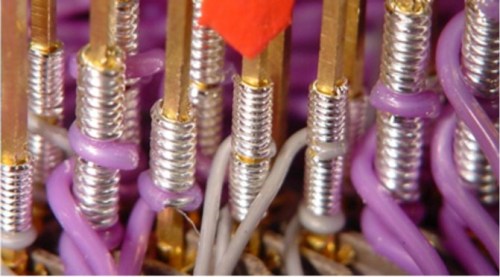Overview: Wire Wrapping Technology



The Soldering Alternative
Not too long ago, the only reliable way to make a good connection between a terminal and a wire was to solder them together. As an alternative to soldering, wire wrapping technology was developed to give electricians a safe and efficient means to connect wires to terminals while still providing a high level of reliability.
The method of wire wrapping involves coiling the exposed wire around the sharp corners of a terminal under mechanical tension. This generates a large amount of tension and compression forces on the terminal’s edge which crushes both oxide layers of the wire and terminal together. For the bond to occur, about 100,000 PSI is needed at the terminal’s edge to result in an oxide-free metal-to-metal bond.
Depending on manufacture specifications, a wire wrap with more turns or function may be needed. To save time, pre-stripped wires can help by offering more reliability and determining the amount of turns that are needed, since a minimum number is required for wire function.
Wire wrapping uses a special rotating tool known a bit. It has a large hole centralized in the face for marking the spot of rotation on the terminal. The contour of the bit is shaped in such a manner that it allows the proper amount of tension to occur while it guides the wire into a helix that is tightly spaced and consistent. When working with the bit, it is held by a collet, which is guarded by a metal tube called a sleeve. The sleeve helps the worker stay safe while keeping the wire in place during the wrapping process.
Wire wrapped connections can be done using two methods: regular, or a modified version. With the regular method, only exposed or un-insulated wire is used when wrapped around the terminal. The modified wrap uses exposed wire with 1-1/2 turns of insulated wire coiled around the terminal, and requires a modified version of a wire wrapping bit.
Using the modified wrap can greatly improve on mechanical stability in wires with low strength and thickness, by adding resistance to vibration. The gauge or diameter of the wire plays a big role in the chosen method used in wrapping. When the gauge of the wire is 24 AWG or larger, the regular method of wrapping is generally used. A 26 AWG or smaller gauged wire often requires the modified wrap,and for most 28 to 30 AWG wire wraps, it is used exclusively.


Course Summary
This course is run by our MIT/CIT IPC Certified Trainers.
Students attending this course get a PCB board and pins to solder in and practice both wire wrapping techniques. Course theory covers practical guidance for manual tool usage and electric wrapping tools. Students will also learn about the main wire wrapping mistakes, and how to avoid them, including:
- Using the wrong bit or sleeve, causing loose non-uniform raps, or pig tailing
- Insufficient turns, which can can occur when the stripped end of a wire is not pushed all the way into the bit
- Using too much pressure or pressing too hard, which can lead to over-wrapping of the wire
- Removing the tool before the wrap is completed, which results in a spiral, open wrap
Contact Us
Please use the form below to include any questions you might have about our courses,
trainers, recertification, upcoming dates and locations, or anything else you'd like to know.
Alternatively, you can email us directly on: sales@okay.com.au.
Please allow up to 2 business days for us to get in touch.
If your enquiry is urgent, please phone 02 9833 9766 (+61 2 9833 9766).
